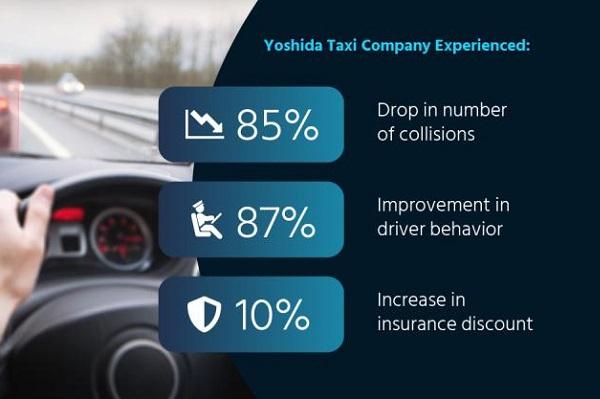If you’ve perused the adas.ie website, you‘ll have a good idea of what collision avoidance systems (CAS) are about, and the features they include. Our partner and world leader in CAS Mobileye has invested significant resources in video and other communications to make the various aspects of this technology accessible to the fleet operator.
And it’s impressive. CAS assists drivers by serving as a “third eye”, continuously reading the road ahead. Both audio and visual alerts are provided for lane departure warning, pedestrian and cyclist collision warning and headway monitoring. Image recognition software cuts down on unnecessary warnings which can desensitise drivers over time, alerting drivers only if a collision is imminent with vulnerable road users, not inanimate objects. Meanwhile, a full telematics system tracks the lorry or bus and reports all warnings to a fleet management system.
It all sounds great. But are the benefits real? Thankfully Mobileye has also invested in a bank of real-life case studies demonstrating how operators across the globe are benefitting from collision avoidance systems, both in terms of safety and cost savings. Here are a few of the most recent testimonials:
In order to reduce a high collision rate – averaging 14 crashes per year – and assist their aging drivers (average age 63), Japanese taxi company Yoshida installed Mobileye’s collision avoidance system, resulting in a dramatic 85% drop in collisions, increased insurance benefits, and better driving behaviour. In addition, Yoshida reported decreased driver stress, which in turn leads to a more enjoyable ride for their clients!
School bus company Seman-Tov in New Jersey believes that every student is entitled to safe and secure transportation. One of the great challenges for school bus drivers is to focus on both the road and the children. To combat potential distractions, the company installed Mobileye units in most of their over 150 buses. The result has been a visible increase in safety, with front-end collisions decreasing by at least 50% and driver behaviour improving significantly.
P&B Transport, a transportation and logistics company in the U.S. and Canada, specialises in deliveries to some of the most congested, accident-prone locations in the north-eastern United States. Looking to reduce rear-end collisions, P&B tested the Mobileye collision-avoidance system in several of its fleet’s trucks. As early as the first week, it was already reporting a significant reduction in such collisions; and by the end of the pilot they had decreased by an overall 80% compared to an equivalent period prior to the test. P&B has added Mobileye to additional vehicles in its fleet, while benefits of the collision avoidance system have continued to expand.
After the Chinese government began requiring that large vehicles be equipped with collision avoidance systems, bus operator Shanghai Jinshan decided to equip their fleet with Mobileye Shield +. There were several reasons Shanghai Jinshan chose to work with the system, including the benefits of the blind spot protection and the detailed safety reports for driver coaching. The results show improved driver behaviour – forward collision warnings decreased by 49%, lane departure warnings by 48% and headway monitoring warnings by 66%. An additional benefit is that energy consumption has decreased by 5%, due to less frequent harsh braking and accelerating by drivers.

